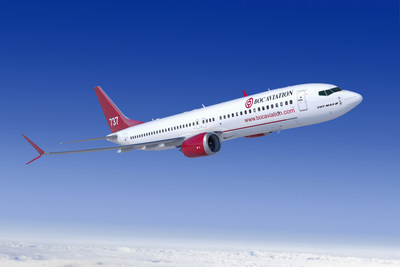Source: Boeing
- Order will support narrowbody market demand as air travel continues to recover
- 737-8 fuel efficiency and reliability support BOC Aviation’s growth strategy
- More than 1,500 gross orders for 737 MAX family since late 2020
BOC Aviation Limited and Boeing [NYSE:BA] today announced that the airplane lessor is growing its 737 MAX portfolio with an order for 40 additional 737-8 jets. With the order, BOC Aviation is advancing its strategy of purchasing new, fuel-efficient, environmentally sustainable airplanes that are in demand with airline customers.
“We are pleased to continue to build on our existing relationship with Boeing, with this 40-aircraft incremental order for the fuel-efficient Boeing 737-8 aircraft. The incremental order takes our total 737 MAX 8 orderbook with Boeing to 80 aircraft. We look forward to continuing to provide one of the industry’s most technologically advanced aircraft for delivery on lease to our airline customers, and to support their sustainable growth over the balance of this decade,” said David Walton, BOC Aviation Deputy Managing Director and Chief Operating Officer.
Boeing continues to see strong market demand for the 737 MAX family, with more than 1,500 gross orders since late 2020.
“We are proud that BOC Aviation continues to invest in the 737-8 with its industry-leading versatility and ability to fly almost any short- and medium-haul market profitably. We look forward to more opportunities to expand our relationship to support BOC Aviation and its customers,” said Ryan Weir, Vice President of Global Leasing Sales, Boeing Commercial Airplanes.
The 737-8 is designed to offer more fuel efficiency, reliability and flexibility in the single-aisle market. The airplane can fly 3,500 nautical miles – about 600 miles farther than its predecessor – allowing airlines to profitably serve new and more direct routes for passengers. Compared to the airplanes it replaces, the 737-8 also delivers superior efficiency, using 20% less fuel and significantly reducing CO2 emissions and operating costs.

